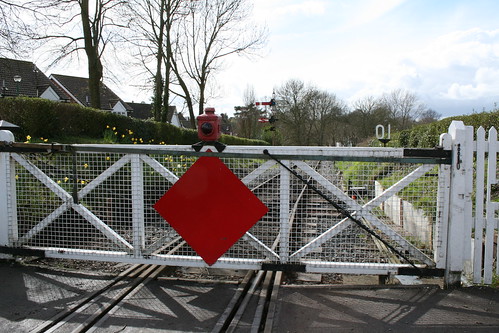Opening up the Weald
cranbrook ideas narrow-gaugeWhile sorting out a few boxes of books during one of the tidying up sessions that periodically grip our household, I chanced across my copy of Railways of Arcadia by John Scott-Morgan. This is a very well presented book on the successful* projects of Colonel H F Stephens, dynamo of light railway construction and management in the UK. Of course this is a subject very much of interest to me at the moment as two of these – the Cranbrook & Paddock Wood Railway and the Rother Valley Railway (later Kent & East Sussex) – occupy the same geographical space and function in the consensus universe as the High Weald Light Railway does in this blog’s. More interesting still is the list of all Stephens’ planned railways, many of which never received official consent, or did but were never constructed.
The assumption is clear from some of the names that the two lines mentioned could have been connected, but following a bit of online research I turned up a kind of “missing link” that has put a bit more flesh on the bones. The Col. Stephens museum, which is based at Tenterden Station on the K&ESR, has reprinted a contemporary newspaper report on the opening of the Rother Valley Railway which mentions some of the planned extensions, and helpfully illustrates these with a map connecting Tenterden and Cranbrook via Rolvenden.
This, plus the branch down to Peasmarsh and Rye, aligns the planned K&ESR network a lot more closely with the O16.5 alternate reality of the HWLR. It only takes the typically optimistic modeller’s imagination to say, well, why not have it all built, and to narrow gauge too. Perhaps if the light railways act had been passed twenty years earlier, instead of hanging about until 1896. But anyway…
I suppose where I am heading with this is that it’s reassuring to know there was once considered to be enough sources of traffic in the rural lands of the Weald to support a network of secondary lines, and that the HWLR scheme reflects it. A little bit of tweaking to the map originally drawn to accompany the layout may be in order – to make access to Cranbrook more direct and to allow for that line out towards Hurst Green and Burwash (where plenty of scenic modelling potential lies).
So if anyone out there can recommend a book on Stephens which covers in more detail those unbuilt schemes, please do let me know.
* Here I am using “successful” to mean “actually built”
- Previous: Statfold
- Next: In no particular order
